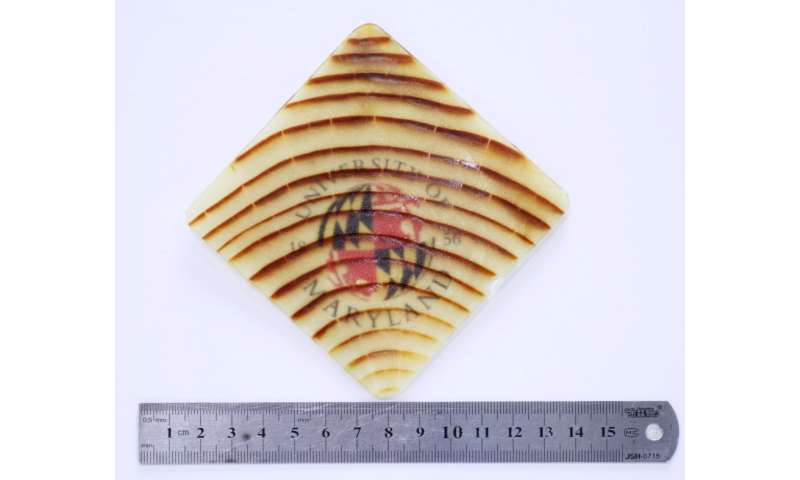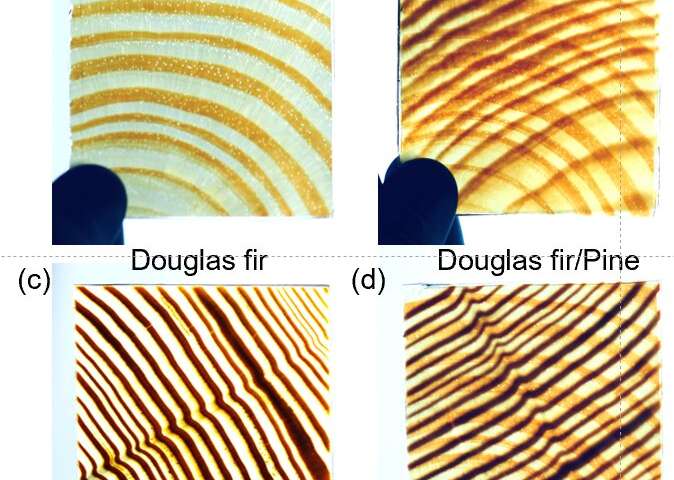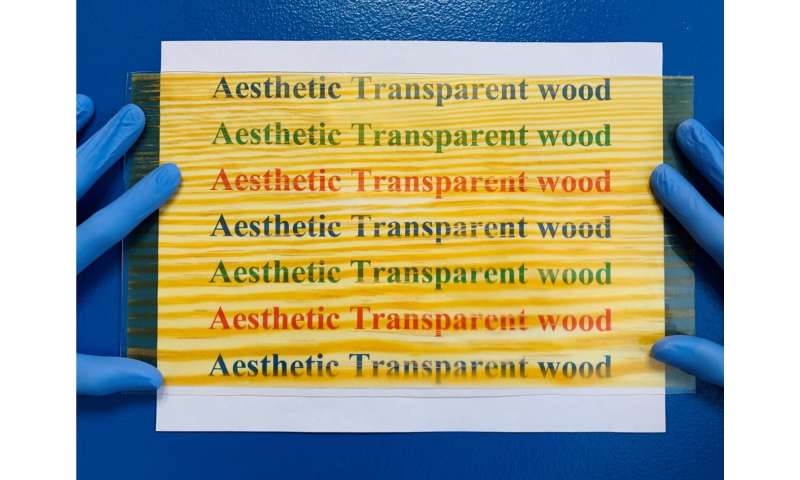https://phys.org/news/2020-08-glass-like-wood-insulates-tough-blocks.html
Engineers at the University of Maryland designed a transparent ceiling made of wood that highlights the natural woodgrain pattern. Credit: A. James Clark School of Engineering, University of Maryland
Need light but want privacy? A new type of wood that's transparent, tough, and beautiful could be the solution. This nature-inspired building material allows light to come through (at about 80%) to fill the room but the material itself is naturally hazy (93%), preventing others from seeing inside.
Materials engineers at the University of Maryland have transformed wood into a transparent building material that directs light for a diffused effect, is tougher and insulates better than glass, and has a natural wood-grain pattern. They published their results last week in the journal Nature Communications.
"In this patented research, we demonstrate the first esthetic wood with patterns following the density variation in natural wood. Such patterned, transparent wood can also block UV and heat, is mechanically strong, which could find many applications in buildings where sustainability and energy efficiency are desired," said Liangbing Hu, Herbert Rabin Distinguished Professor and Director of the Center for Materials Innovation at the University of Maryland, College Park.
Tiny nanostructures made of cells pass water and nutrients up and down the tree, but they hold importance here as vertically aligned channels in the wood, a naturally-grown structure that can be used to pass light along.
The team started with a small block of Douglas fir and used chemicals to selectively remove its lignin, the part that makes wood brown and strong. This makes the wood transparent to light. They left behind all the other cell structures in the wood, which provide a natural pattern.

By removing a key component of wood, a block of wood can be made transparent, with natural abilities to block heat and direct light, researchers at the University of Maryland showed.
Credit: A. James Clark School of Engineering, University of Maryland

Four natural woodgrain styles of “aesthetic wood,” a new transparent formulation of wood by engineers at the University of Maryland, College Park.
Credit: A. James Clark School of Engineering, University of Maryland
The remaining wood cell structures also direct light straight through the plank. The wood is cut against the grain, so that the channels that drew water and nutrients up from the roots lie along the shortest dimension. The cell structure that still remains bounces the light around just a little bit, a property called haze, but in general the light travels directly through microchannels in the wood. At no matter what angle the sun strikes, the light travels perpendicularly through the wood and consistently falls on the same diffuse area all day.
The researchers simulated a room with a ceiling made of the new "esthetic wood," as the researchers have dubbed it, and showed that it insulates better than glass. Esthetic wood inherits characteristics from wood and epoxy, another major ingredient in the process. This also allows it to be tougher than glass. Esthetic wood proved to be two and a half times more effective at blocking heat than glass, and three and a half times as tough as untreated wood, or almost 15 times as tough if the wood is sliced with the grain. It also effectively blocks UV light, but allows visible light through.

A new way to process wood that makes it transparent, strong, and heat-resistant was developed by engineers at the University of Maryland.
Credit: A. James Clark School of Engineering, University of Maryland
The researchers liked the pattern made by the lighter brown early wood, so named because it is produced early in the growth phase of the wood, and darker latewood. Early wood has less lignin because it has less material altogether, with cell walls about a quarter as thick. The researchers also tried basswood and pine, which can be used physically similarly and have lighter wood grain patterns.
Inventwood, a spin off company from UMD, is commercializing this type of transparent wood technology.
Recommend this see thru post and follow The birth of Modern Man


No comments:
Post a Comment
Stick to the subject, NO religion, or Party politics